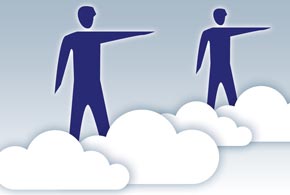At Salesforce’s annual Dreamforce conference, which CEO Marc Benioff said attracted 170,000 registered attendees to San Francisco this week, the focus on empowering its customers’ customers has been especially prevalent. Along those lines, the big news from the show is Salesforce’s new Internet of things cloud, which was built to ensure that no matter what products customers may be using, companies would be able to capture, analyze and act on the data those products generate.
Benioff had a number of customer stories queued up to illustrate how Salesforce’s technology is improving the customer experience. For instance, Microsoft and Cisco Systems have begun using Salesforce’s IoT cloud to crunch data coming from Internet-connected devices to improve marketing and customer service.
Western Union, meanwhile, is using a combination of several Salesforce clouds to automate cumbersome paper processes for ordering money wires. The company also uses the technology to provide commercial customers with custom apps for managing credit and invoices.
But improving the customer experience can mean more than better service and easier transactions. It can literally save lives.
Laura Esserman, a professor of surgery and radiology at the University of California, San Francisco, was on hand to tell show attendees about the Athena Breast Health Network, a UC-wide initiative that will track 400,000 women through their breast cancer screening and care.
The initiative is relying on technology and consulting expertise donated by Salesforce to help it collect and analyze the resulting data in the hope of improving breast cancer treatment outcomes. The impact of the cloud on the project is even more pronounced when considering that it’s a sort of crowd-sourced approach to health care.
Esserman explained that because of the numerous varieties of breast cancer, the more women who are willing to share their stories and experiences, the more likely it is that a care provider can apply the right treatment to get the best outcome.
“If we do the same things over and over again, guess what? We get the same results,” she told the keynote audience. “We have to have this database.”
The way Benioff sees it, the world is teeming with opportunities to help all types of organizations understand their customers better. In fact, he cited an IDC study indicating that just 1 percent of customer data has been analyzed. (The study he cited is from 2012, so that figure has likely risen.)
“Even though we’re creating all this data and all these applications, and doing all these amazing things, there’s still a gap,” he pointed out.









